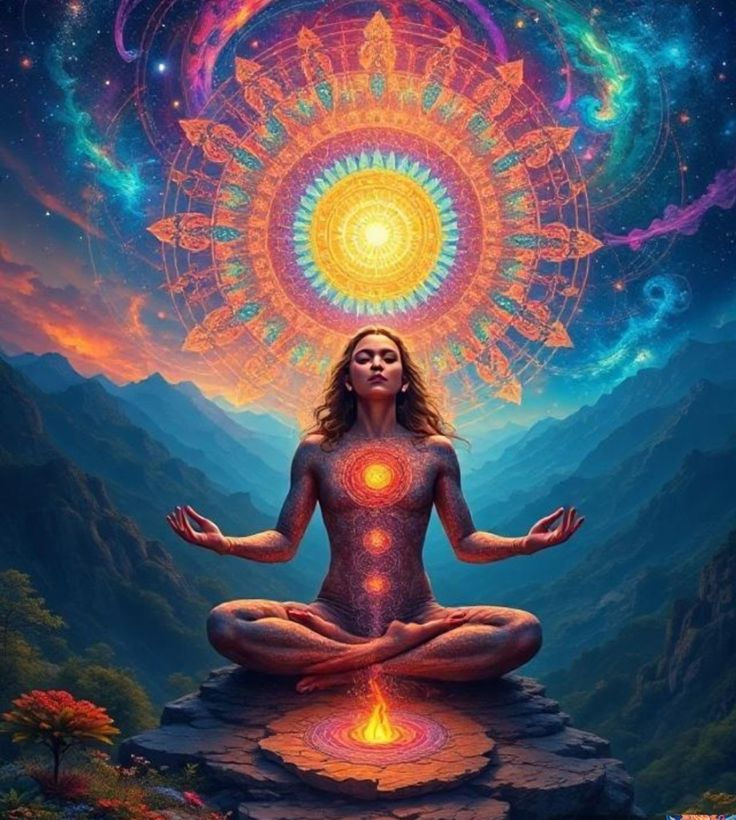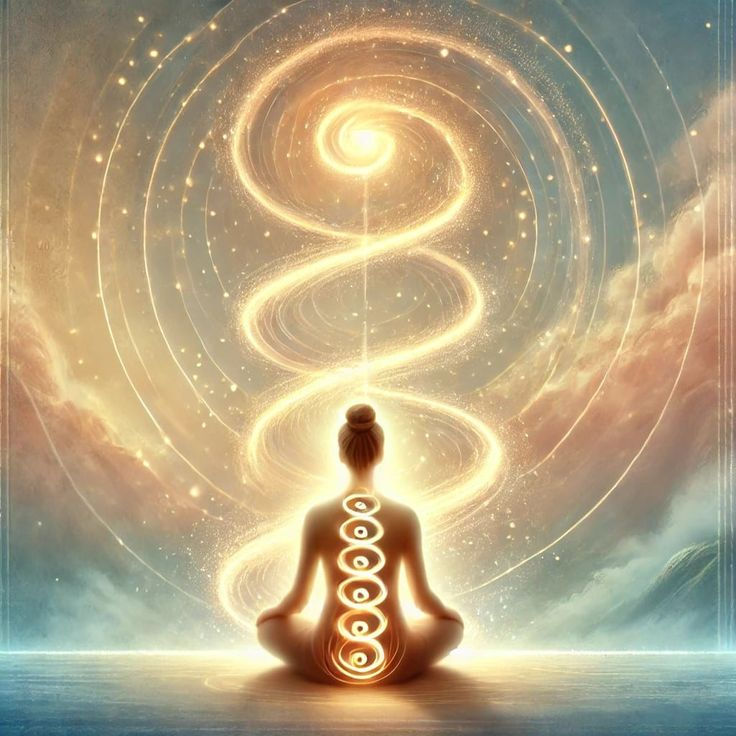The Sacred Struggle: What No One Tells You About Kundalini Awakening
- Dr. Sahila

- Jun 14
- 5 min read
5 Common Pitfalls to Avoid

Ever heard someone say their Kundalini experience was terrifying or chaotic? You're not alone. While Kundalini awakening is a path to profound transformation, many seekers today are unprepared for its intensity—leading to confusion, emotional overwhelm, or even fear.
The truth? Awakening is not just about energy rising. It's about untying inner knots, dissolving the ego, and surrendering to a higher truth. Without guidance, devotion, and preparation, this sacred journey can feel destabilizing rather than divine.
In this blog, we explore five real challenges faced by modern seekers during Kundalini awakening—and how to approach them with awareness, discipline, and grace. 1. When the Energy Awakens Before You’re Ready
Kundalini Yoga is not just a practice—it’s a preparation. It requires deep mental, physical, and emotional conditioning before the actual awakening occurs. Yet, for some seekers, the awakening happens spontaneously—without warning or readiness. This can trigger an overwhelming flood of energy that the body and mind are simply not prepared to handle.
When this surge occurs without guidance, it can cause not just confusion and fear, but also lasting physical or psychological imbalances. That’s why authentic Kundalini paths emphasize gradual progress, building the strength and resilience needed to carry such intense power.

But when it’s done right, something magical happens.
Your perception begins to shift. The world remains the same—the same people, the same responsibilities—but the lens through which you experience life becomes sattvic (pure, balanced, elevated). Everything looks and feels different. You begin to notice the subtle beauty and divine essence in the ordinary.
For me, it changed the way I saw my husband. After awakening, I began to truly recognize the depth of his love, his quiet strength, and the sacredness of our connection. What once felt emotionally empty or physically routine became deeply fulfilling and spiritually alive. Union became more than physical—it became sacred.
I started living with a newfound clarity, gratitude, and presence. The veil had lifted. Where I once responded with judgment or dissatisfaction, I now felt softness and compassion. Anger, envy, greed, lust—they no longer stirred within me. That dormant fire had transformed into sacred fuel, lifting me into a place of peace and higher consciousness.
2. The Invisible Blockers: Breaking Through the Three Granthis

Granthi means “knot” in Sanskrit—and in the yogic tradition, there are three powerful energetic knots: Brahma Granthi, Vishnu Granthi, and Rudra Granthi. These psychic blockages live in the subtle body and stand between the seeker and a full Kundalini rise.
These knots aren’t just energetic—they represent deep-rooted psychological patterns, fears, attachments, and identity structures. Think of them as silos that hold your conditioning, self-doubt, and limiting beliefs. They tie you to your smaller self and keep you locked in an illusion of separation.
The process of breaking these knots is not passive. Hatha Yoga uses pranayama (breath control) and bandhas (energetic locks) to slowly unravel them. Through this disciplined effort, we start to negotiate with our inner resistances and begin releasing these limitations.
More advanced Tantra Yoga kriyas offer deeper piercing of these knots using combinations of meditation, mudras, asanas, mantras, and breathwork. But even these must be built upon a solid lifestyle—one rooted in healthy routines, sattvic diet, ethical living (Yamas), and personal disciplines (Niyamas). Without this foundation, even the most advanced techniques can falter.
3. The Ego Wall: Ahankara and the Illusion of 'I'
One of the greatest spiritual hurdles is the ego—known as ahankara in Sanskrit. Ahankara is the sense of “I” and everything you think you are: your name, your identity, your roles, your achievements, your emotions, and even your thoughts.

Symbolically, "Ah" is the first sound in Sanskrit, and "Ha" is the last. The root "kara" means “that which does.” Together, ahankara encompasses your entire constructed self—from A to Z.
To awaken Kundalini fully, you must be willing to surrender all of this. Letting go of ahankara isn’t about denial—it’s about offering your entire being to something greater. In yogic tradition, that “greater” is your Ishta Devata—your personal deity or chosen divine form. It could be a goddess, a guru, or even a natural element like the Sun. It’s whatever connects you most deeply to divinity.
True surrender is not defeat—it’s liberation. Only when the ego dissolves can the boundless nature of the Self be experienced.
4. When the Connection Fails: Struggling to Feel Your Ishta Devata
At the heart of a successful Kundalini awakening lies a strong, loving relationship with your Ishta Devata—your divine guide, often experienced as your Shakti or divine mother. Shakti is not just a symbol. She is the raw creative force, destined to reunite with Shiva, the stillness of consciousness.

If this relationship of faith, devotion, and surrender is missing, the energy of Kundalini can become chaotic. It’s like lighting a powerful fire with no direction—intense, but ungrounded.
That’s why many people who awaken Kundalini without preparation or guidance report feeling confused or even disturbed. They activated the power, but lacked the reverence, the surrender, and the trust. Without Shakti’s nurturing, Kundalini becomes maya—an illusion that misguides rather than uplifts.
But when you walk the path with bhakti (devotion), shraddha (faith), and surrender, Shakti becomes your compass. She leads you, protects you, and steadies your journey as a mother would.
5. The Final Trap: Getting Stuck in Maya (Illusion)
Maya—the veil of illusion—is perhaps the most seductive obstacle in the journey of awakening. Rooted in the Muladhara chakra, Maya is what pulls us into greed, deceit, envy, and attachment to worldly pleasures. Until we rise above these lower tendencies, true Kundalini energy cannot ascend.
Many seekers become entangled here, mistaking material success, ego validation, or external achievements for spiritual growth. But Kundalini cannot be tricked. It responds only to truth and purity.

Awakening requires transforming ahankara into spiritual fuel. The same time and energy we use to chase status or wealth must be redirected inward—toward self-inquiry, devotion, and daily practice. When this shift happens, Kundalini rises effortlessly and becomes a deeply enriching force.
This is why Tantrics often experience smoother, faster transformation. From the very beginning, they consciously let go of ego, wealth, fame, and worldly identity. Their path is one of pure surrender. And because they shed the false self early, they often succeed where others struggle—perhaps 90% or more of the time.
Even their rituals—like Nasya (symbolic embodiment of their Ishta Devata)—are infused with sacred intention. These forms are not empty gestures; they are living, breathing expressions of divine connection, used to deepen and accelerate the awakening process.
Conclusion: Awakening Is Not a Destination—It’s a Devotional Unfolding

Kundalini awakening is not just an energetic phenomenon. It’s a profound inner transformation—a sacred unraveling of illusion, identity, and ego. But as we’ve seen, this journey isn’t without its shadows. The five challenges we explored—unprepared energy surges, the three granthis, ego dissolution, disconnection from the divine, and the grip of maya—are not signs of failure. They’re invitations to deepen your practice, refine your path, and walk with humility.
True awakening isn’t about intensity. It’s about integrity.
It’s about surrendering with trust. Preparing the vessel. Honoring the energy. And staying devoted—not to the outcome, but to the process.
When approached with love, patience, and right guidance, Kundalini becomes a source of healing, clarity, and blissful union with the Divine. And in that sacred fire, what once felt fragmented becomes whole again.
You don’t chase awakening. You become ready for it.
Let the preparation be your path. Let grace do the rest.





Comments